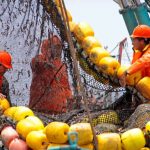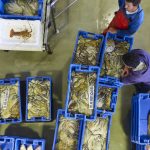It is found that occasionally, unusually high levels of arsenic present in blue mussels from some locations in the Sogne Fjord and the Hardanger Fjord. It is told that the National Institute of Nutrition and Seafood Research (NIFES) has annually analysed blue mussels from around 50 locations along the Norwegian coast in order to monitor the level of metals and other chemical components.
The result of the analysis are related to the Norwegian Food Safety Authorities surveillance programme, which shows that blue mussels from some locations in the Sogne Fjord and the Hardanger Fjord have had a high level of total arsenic, especially in the spring. NIFES said that total arsenic includes all the different chemical forms of arsenic found in shellfish, both organic and inorganic. It is the inorganic arsenic forms that are toxic. In a food safety perspective, it is therefore important to examine the amount of inorganic arsenic in blue mussels.
Kare Julsham, Head of the Surveillance Research Programme at NIFES, explained that the observations are related to only a few locations. Also, one location which has shown a high level of inorganic arsenic one year has not necessarily shown a high content of inorganic arsenic the next year, says Julsham.
It is informed that the study is conducted in connection to the Norwegian Food Safety Authority Surveillance programme on mussels, and analyses of inorganic arsenic in blue mussels will continue with the same frequency as previously. It is told that although the concentration of inorganic arsenic was high in the Sogne Fjord and the Hardanger Fjord, the findings represent no threat to food safety.








